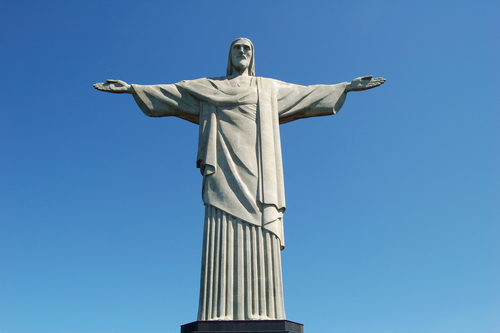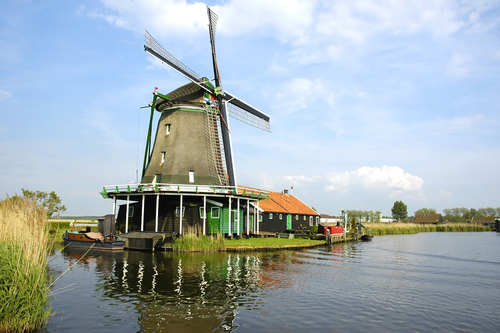As Thanksgiving approaches, the feeling of gratitude resonates across the world. While the United States has its iconic turkey feast and family gatherings, many other countries also have their own culturally rich and diverse expressions of thankfulness. Though stemming from similar ideals, each country has its own unique traditions that add a special touch to the holiday’s joyful festivities. From Asia to Europe, Africa to South America, here are a few different variations of Thanksgiving traditions from around the globe!
Contact Victory Sports Tours for an International Tour Proposal for your team by clicking here!
1. Germany


In Germany, “Thanksgiving” is known as Erntedank, or “Harvest Festival of Thanks.” Traditionally observed on the first Sunday of October, it is a time for expressing gratitude for blessings received throughout the year. Erntedank involves festive gatherings, religious ceremonies, and the decoration of churches and homes with harvested fruits, vegetables, and flowers.
The German holiday originated from ancient agricultural and pagan traditions, initially celebrating successful harvests after months of hard work. Evolving over time, it became intertwined with religious gratitude to God during the harvest season and is now celebrated by both Protestants and Catholics in German-speaking countries. Today, Erntedank serves as a time for communities and families to gather, express thanks for the harvest, and engage in festivities such as parades and feasts, symbolizing the abundance of the season.
2. Japan
In Japan, the equivalent to Thanksgiving is Kinro Kansha no Hi, or Labor Thanksgiving Day. A national holiday celebrated on November 23rd, Kinro Kansha no Hi, is a day to express gratitude for labor, production, and the blessings of the year. Unlike in America, Japanese do not celebrate with feasting, but rather led by labor organizations that coordinate events where citizens are encouraged to celebrates ideals of hard work and community involvement. The holiday is celebrated with ceremonies, festivals, and expressions of appreciation, such as children making thank-you cards for essential workers. Overall, Kinro Kansha no Hi is a time for Japanese citizens to express feelings of gratitude and honor the work of laborers.
3. Brazil


Dia de Ação de Graças, which translates to Thanksgiving Day, is celebrated in Brazil as a day of gratitude and reflection, similar to the American Thanksgiving. While both holidays share the theme of giving thanks, there are cultural and historical differences in their origins and traditions. In Brazil, Dia de Ação de Graças is not tied to a specific historical event like the Pilgrims’ harvest feast in the United States. Instead, it is often associated with the Christian tradition of thanking God for the year’s blessings.
Although the exact origin of Dia de Ação de Graças, is unconfirmed, many say that the holiday came to be after the country’s ambassador to the U.S. went on a trip to the States in November, sometime in the 1940s. He happened to be there to witness the way Americans celebrate Thanksgiving and loved the tradition so much he came back to Brazil and proposed to the president at the time that they create their own version of the holiday. Brazilians celebrate Dia de Ação de Graças by attending a church service in the morning, giving thanks for the harvest season. They also indulge in a feast with foods that resemble a traditional American Thanksgiving including turkey (“Peru”), mashed potatoes, and pumpkin pie.
4. South Korea
Chuseok, also referred to as the Korean Thanksgiving Day, is one of the most significant and festive holidays in South Korea. Spanning over three days, Chuseok takes place in late September or early October and celebrates the autumn harvest and expressing gratitude to ancestors for their blessings. During this holiday, a significant number of residents in major cities such as Seoul migrate from the urban areas to their ancestral hometowns for family celebrations, often leading to some of the most substantial traffic jams of the year.
Koreans celebrate Chuseok with many traditions, with one notable aspect being the preparation of special foods such as Songpyeon. This traditional rice cake is crafted with a delectable filling of sesame seeds, chestnuts, red beans, or other similar ingredients. During the holiday, families spend time making Songpyeon together, embodying the importance of family within the Korean culture. Another important Chuseok tradition is gift-giving. Koreans express gratitude by exchanging gifts with family, friends, and business associates. Popular gift options include high-quality meats, fresh fruits, traditional snacks, and even practical items, with Spam being a particularly popular gift. Similar to a traditional Thanksgiving in the U.S, Chuseok is a time for reflection, honoring ancestors, and spending time with family, making it one of the most important holidays in South Korea.
5. The Netherlands


Thanksgiving is not a widely observed holiday in the Netherlands, but it has a unique connection to the city of Leiden. English Separatists, known as the Pilgrims, resided in Leiden for more than ten years before embarking on their journey to the New World in 1620. While not a Dutch tradition, the Pilgrims’ time in Leiden is intricately tied to the beginnings of Thanksgiving, as they later experienced the first Thanksgiving in the Plymouth Colony in 1621.
Today, the Thanksgiving celebrations in the Netherlands, particularly in Leiden, draw inspiration from the American tradition. Every third Thursday of November, many residents of Leiden attend a morning church service, sharing expressions gratitude, followed by a classic feast featuring turkey, mashed potatoes, vegetables, cranberry sauce, and delectable Dutch apple pie.
Contact Victory Sports Tours for an International Tour Proposal for your team by clicking here!
